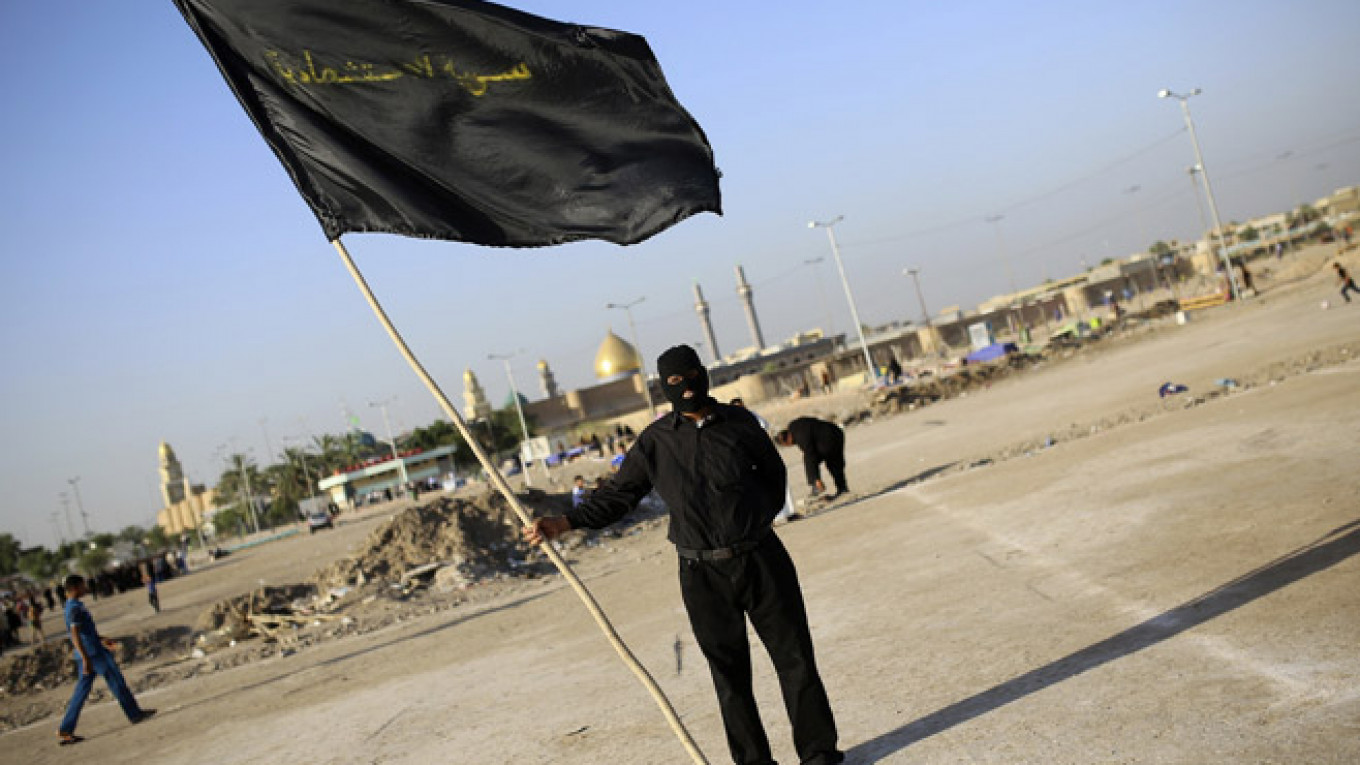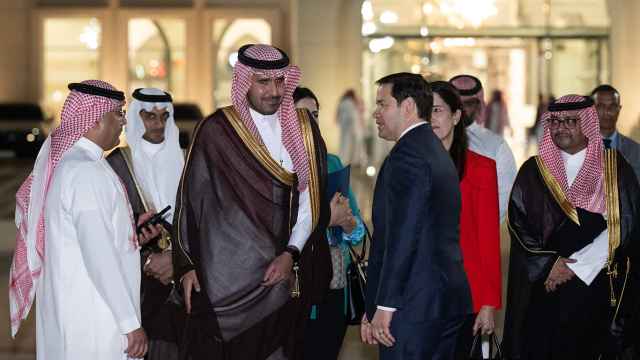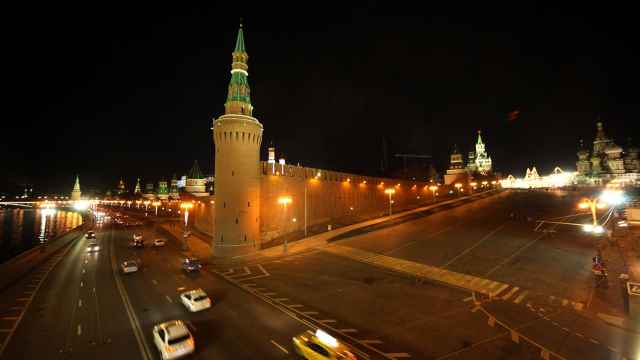In the midst of so much economic uncertainty and questions over how Russia will be able to attract the volume of foreign investment it desperately needs to boost long term growth, the one piece of good news is the price of oil.
Even before events in Iraq boosted the price of crude, traders had starting to push the price expectation higher for the second half of this year and into 2015. Urals crude, which averaged $109 per barrel over the past six months, looked more likely to move into the $110 to $115 per barrel range in the 2nd half than to fall below the $100 per barrel feared only three months ago. The escalation of violence in Iraq assures that move higher and even raises the possibility of a spike closer to $120 per barrel over the near term.
For Russia that means the ruble is more likely to recover at least some of its January-February loss and may again trade closer to 34 against the dollar and 46 against the euro. Of course, Russia must also factor in the still-dangerous situation in eastern Ukraine and the unresolved gas dispute between Ukraine and Russia, which are the dominant factors in the currency market for now.
Any threat of further sanctions would send the ruble exchange rate back towards 35.5 against the dollar. The gas talks will provide the key indicator of risk; when a deal is agreed this will be taken as a positive indicator of risk reduction and, in combination with the higher oil price, should guarantee a better than 34.0 exchange rate against the dollar.
The higher oil price adds confidence that the federal budget will report a surplus this year. Capital flight may also reverse with a better ruble exchange rate. According to the Central Bank, more than $20 billion of the 1st quarter's $51 billion capital flight t domestic savers and companies avoiding ruble risk and switching into a foreign currency, not money taken out of the country. High oil and reduced sanctions risk may see most of that reverse in the next two quarters.
Still, when it comes to the oil price impact in the economy, the observation that high oil is good and low oil is bad is far too simplistic. Certainly a higher price will support the currency and boost budget revenues. But while higher oil is good for the balance sheet and fiscal wellbeing, it results in economic complacency and minimizes legislative support for painful or even bothersome reforms.
As mentioned, the situation today is a far cry from that of only three months ago, when the ruble closed at 36.6 against the dollar and the prevailing fear was oil slipping to below $100 per barrel.
At that time, the International Energy Agency, or IEA, speculated about a big rise in Libyan and Iraqi oil exports. In the U.S., lobbyists for the oil industry pushed for the release of oil from the 695 million barrel Strategic Petroleum Reserve and the end of the ban on the export of crude.
Many assumed that U.S. oil, in combination with the expected rise in exports from Libya and Iraq, would bring crude to $90 per barrel or lower. This, in addition to worries over Russia's role in Ukraine's crisis, weakened the ruble and prompted investor fears about Russia risk.
But the presumption that post-Qaddafi Libya is anything other than a collection of warring tribes and that Iraq's internal security situation had greatly improved quickly proved illusionary. And that was well before the stunning victory of radical ISIS fighters over the Iraqi Army.
Before the attack on Qaddafi's regime, Libya produced an average of 1.7 million barrels per day. The IEA had hoped that the country might soon return to at least the 1.4 million barrels it averaged in 2012. But last month OPEC data shows production at only 300,000 barrels per day and even that is now at risk as tribal violence intensifies.
Even before last week's events in Iraq, meanwhile, the country's oil minister admitted that continuing security problems across the country, which result in frequent pipeline disruptions, meant that its 4 million barrel target is out of reach this year and an average of 3.3 million barrels per day is more realistic. Even that lower figure now seems optimistic.
There is also less pressure in the U.S. for a lifting of the export ban. The news from Libya and Iraq has led to a more cautious approach as business groups warn that exporting oil, or indeed gas, may undermine one of the critical factors which has helped revive the U.S. economy, i.e. cheap energy, and may leave the country exposed if events in the Middle East worsen.
The U.S. has seen a very big jump in oil production over the past six years. Average daily oil production in 2008 was 7.5 million barrels while, this year, the average is expected to reach 11.3 million barrels. But the U.S. still burns more than 19 million barrels per day or one-fifth of total world daily usage. This means that the U.S. still has to import about 8 million barrels. So despite the high volume of oil reserves, no U.S. administration is going to take the risk of ending the crude export ban so long as Middle East and North Africa oil flow risks remain high.
The price of oil has been unusually stable for the past three and a half years. That has inevitably led some traders to refer to the mythical "new paradigm." But warning flags should be raised whenever that phrase is used in the oil market. After all, who can forget the cover of the magazine The Economist in 1998 suggesting $5 per barrel oil was the new norm?
This year Urals crude trading between $110 to $115 per barrel looks very likely due to the supply risks and steadily rising demand as the global economy recovers. Those conditions may well extend into 2015 as few expect any quick reduction of the risks in Libya or Iraq.
Question marks are also starting to appear over the stability of Nigeria and the sustainability of oil production in Venezuela. Between them those two countries produced over 4.4 million barrels per day in May and traders will not lightly dismiss the increasingly unsettling news from Abuja or Caracas.
For now, Russia is a part of the proverbial silver lining around the cloud that is the Middle East. One would like to hope, though, that the concerns raised by the failing economy from early 2013 and the threat of investment isolationism from the Ukraine crisis may have shaken the policy complacency usually linked to high oil revenues.
And indeed, the price of oil may look like a life preserver thrown to a drowning economy — but in the long term oil barrels make very poor life boats.
Chris Weafer is senior partner with Macro Advisory, a consultancy advising macro hedge funds and foreign companies looking at investment opportunities in Russia.
A Message from The Moscow Times:
Dear readers,
We are facing unprecedented challenges. Russia's Prosecutor General's Office has designated The Moscow Times as an "undesirable" organization, criminalizing our work and putting our staff at risk of prosecution. This follows our earlier unjust labeling as a "foreign agent."
These actions are direct attempts to silence independent journalism in Russia. The authorities claim our work "discredits the decisions of the Russian leadership." We see things differently: we strive to provide accurate, unbiased reporting on Russia.
We, the journalists of The Moscow Times, refuse to be silenced. But to continue our work, we need your help.
Your support, no matter how small, makes a world of difference. If you can, please support us monthly starting from just $2. It's quick to set up, and every contribution makes a significant impact.
By supporting The Moscow Times, you're defending open, independent journalism in the face of repression. Thank you for standing with us.
Remind me later.








